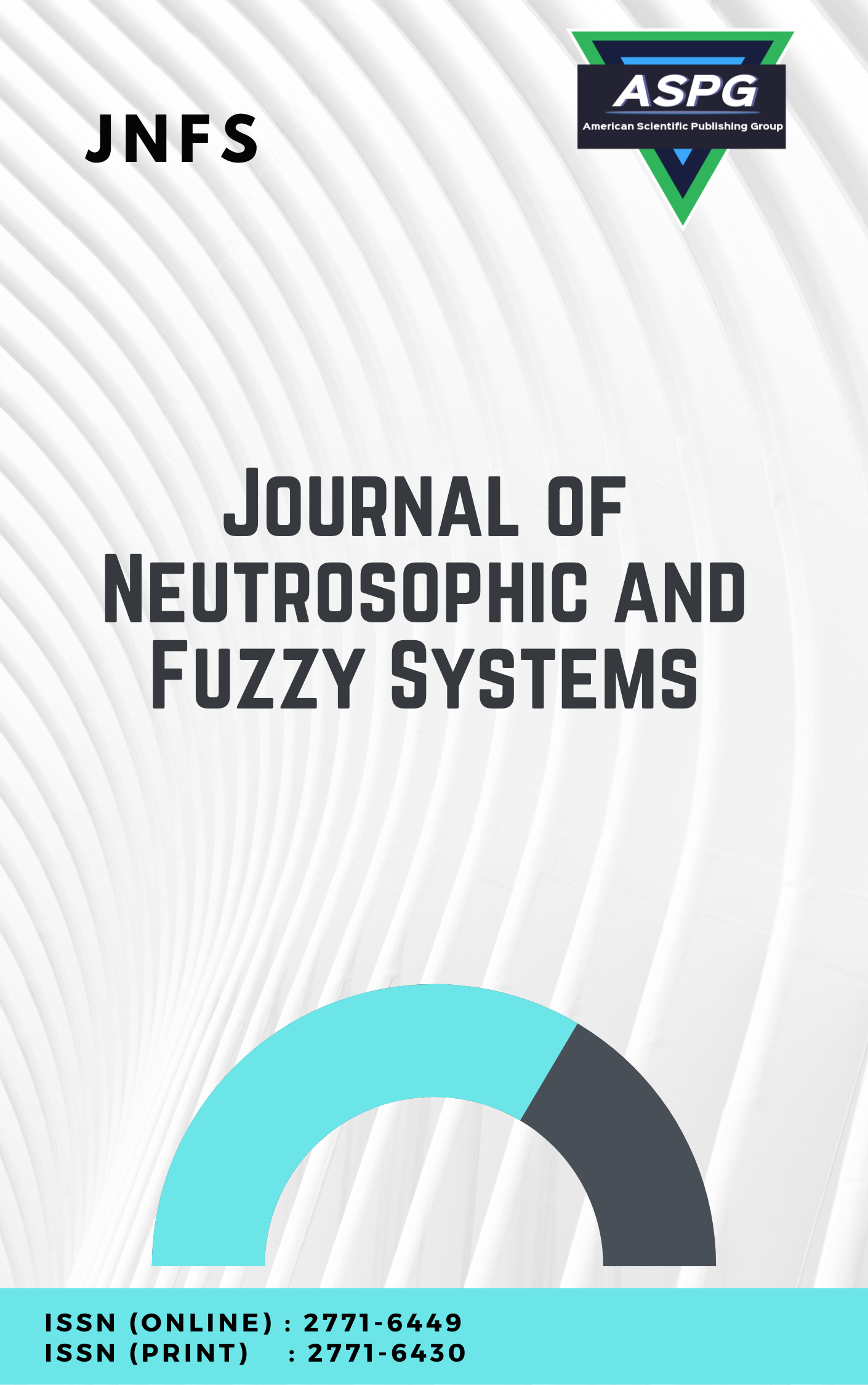

This paper provided new concepts of neutrosophic crisp continuous functions named neutrosophic crisp αg-continuous, neutrosophic crisp gα-continuous, neutrosophic crisp gαg-continuous, neutrosophic crisp gαg*-continuous and neutrosophic crisp gαg(**)-continuous functions and their relations.
Read MoreDoi: https://doi.org/10.54216/JNFS.060201
Vol. 6 Issue. 2 PP. 08-14, (2023)
When conducting the simulation process for any of the systems according to classical logic, we start by generating random numbers belonging to the regular probability distribution on the field [0, 1] using one of the known methods, and then we convert these random numbers into random variables that follow the probability distribution that the system to be simulated works with, the simulation process that we perform it gives specific results that do not take into account the changes that may occur in the work environment of the system, to obtain more accurate results In a previous research, we prepared a study through which we reached random neutrosophic numbers follow the uniform distribution of the neutrosophic on the field with [1 , 0] no determination that can be enjoyed by the two parties of the field, one or both together, it may be in the form of a group or a field in another research , we converted these neutrosophic random numbers into neutrosophic random variables that follow the neutrosophic exponential distribution using the opposite conversion method that depends on the cumulative distribution function of the probability distribution by which the system to be simulated works, in this research we have useda method The opposite transformation to generate random variables that follow the neutrosophic uniform distribution and we have reached relationships through which we can convert the neutrosophic random numbers that follow the neutrosophic uniform distribution defined on the domain [1 , 0] with the indeterminacy enjoyed by each end of the field, one or the other, into random variables that follow the neutrosophic uniform distribution, a b , which is a classical uniform distribution whose medians are notprecisely defined values , one or both may be cognitiven in the form of a set or a domain, so that n take into account all possible cases of mediators while maintaining the condition , and the b,a ;a<b method was illustrated through an applied example and we came up with neutrosophic random variables that follow the uniform distribution that give us more accurate simulation results when used due to the indeterminacy of neutrosophic values.
Read MoreDoi: https://doi.org/10.54216/JNFS.060202
Vol. 6 Issue. 2 PP. 15-22, (2023)
Recently, several researchers paid attention towards dealing the data sets beyond Non-Euclidean geometry. To achieve this goal, Turiyam set and its properties is introduced for precise measurement of uncertainty in data sets beyond acceptation, rejection and uncertain parts. However the characterization of uncertainty requires a new operator and method. To resolve this issue, the current paper introduces a method for precise characterization of fourth dimensional data based on Turiyam operator and its complement with an illustrative example. The proposed method also compared the given method with Euclidean, Non-Euclidean, and NeutroGeometry data characterization.
Read MoreDoi: https://doi.org/10.54216/JNFS.060203
Vol. 6 Issue. 2 PP. 23-37, (2023)
In this paper the concepts of somewhat neutrosophic δ-continuous functions, somewhat neutrosophic δ-open functions between neutrosophic topological spaces are introduced and studied. Besides giving characterizations of these functions, several interesting properties of these functions are studied. The concepts of neutrosophic δ-resolvable spaces and neutrosophic δ-irresolvable spaces are also introduced and studied in this paper. These functions can be extended to a somewhat neutrosophic δ-irresolute continuous functions in neutrosophic topological spaces.
Read MoreDoi: https://doi.org/10.54216/JNFS.060204
Vol. 6 Issue. 2 PP. 38-48, (2023)
This paper, they developed a new path to compromise with Pythagorean Shortest Path Problem (PSPP) in a network location each edge weight is expressed an Triangular Fuzzy Pythagorean Numbers (TFPNs). Then the Proposed Algorithm (PA) further provide the SP length from the source node (SN) to destination node (DN) from applying a Ranking Function for Pythagorean Fuzzy Numbers (PFN). Certainly, a descriptive example is also included.
Read MoreDoi: https://doi.org/10.54216/JNFS.060205
Vol. 6 Issue. 2 PP. 49-54, (2023)
Linear programming problems with integers, are issues in which some or all decision variables are restricted to be their values are correct values, and here these models can be solved by neglecting the constraints of integers and then rotating the fractional values of the optimal solution to obtain correct values, paying attention to the need for the resulting solution to belong to the accepted solutions area, but this procedure can lead to the desired purpose if the number of variables is small, but if there is a number We do not guarantee to obtain an optimal correct solution for the model, even if all the solution combinations are tested, knowing that in the model that contains a variable n a set of solutions 2n must be tried, and if we can rotate, the correct solution will be an approximate solution, in order to obtain more accurate integer values, we present in this research a study in which we use binary integer variables to build the neutrosophic linear mathematical model. The importance of this study lies in providing solutions to many practical problems that require solutions with integers and we will clarify all the above by building a mathematical model for the problem of the mixture of products using binary integer variables and neutrosophic values.
Read MoreDoi: https://doi.org/10.54216/JNFS.060206
Vol. 6 Issue. 2 PP. 55-58, (2023)